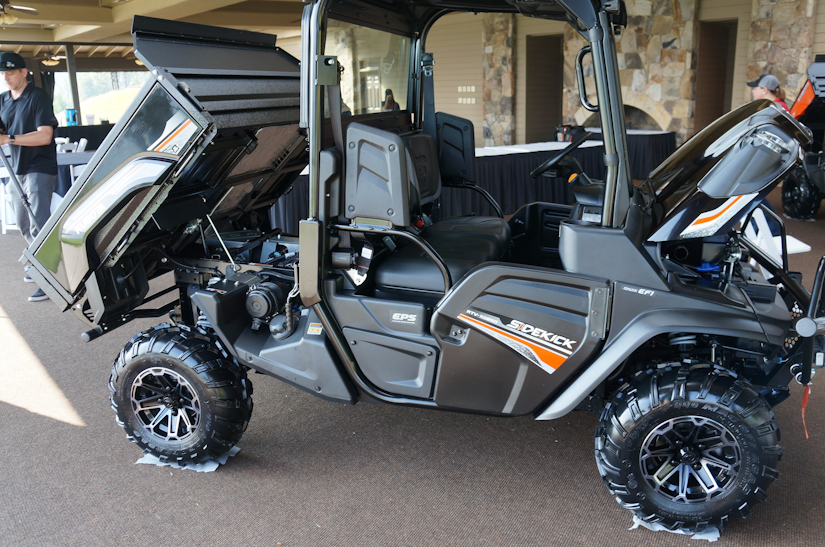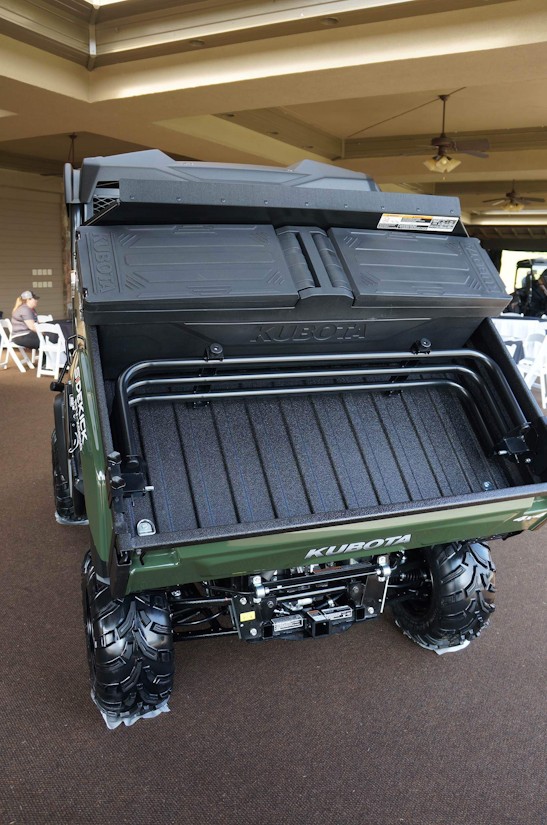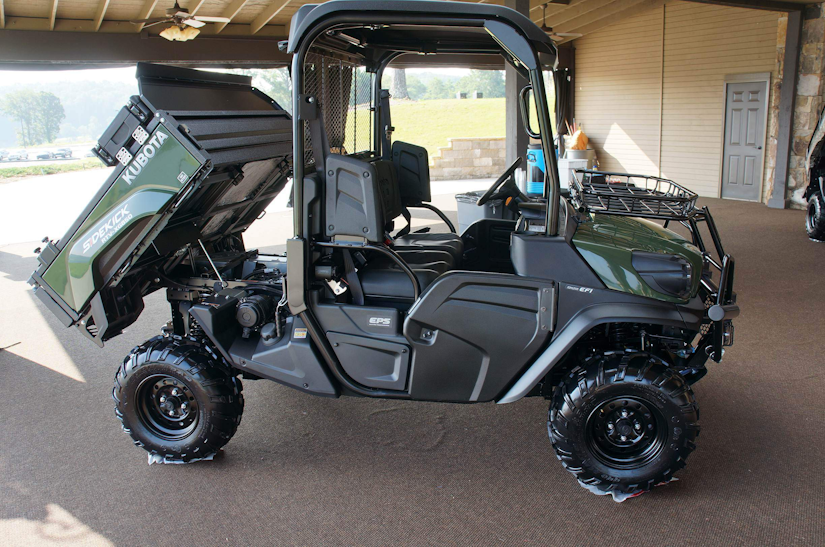 On the sunny banks of the blue waters of Lake Lanier in Georgia, Kubota turned a former golf course into a media test track for its new gas-powered RTV-XG850 Sidekick “rugged terrain vehicle,” designed for work in a variety of applications, including construction.
On the sunny banks of the blue waters of Lake Lanier in Georgia, Kubota turned a former golf course into a media test track for its new gas-powered RTV-XG850 Sidekick “rugged terrain vehicle,” designed for work in a variety of applications, including construction.
The company says the Sidekick represents its desire to capture a slice of the fast growing “multipurpose vehicle” market – a vehicle that allows those in construction and other industries to transition from pickup trucks on the worksite to a less costly and more nimble means of getting around.
But Kubota’s fastest RTV isn’t just about getting around and having some high-speed off-road fun in the process. It’s designed for work, say company officials. It has 1,000 pounds of payload capacity and can tow up to 2,000 pounds on flat surfaces and up to 1,550 pounds on hilly terrain.
And it’s fast. The XG850 can travel up to 40 mph with its 48-horsepower, gasoline-powered Subaru engine. That’s an 11 mph boost from Kubota’s other RTV-X models, making it Kubota’s fastest RTV.
Performance updates and test drive

A test drive in the Sidekick’s camo model. Credit: Georgia Zumwalt
To reach such speeds and handle added capacity, the company made several enhancements to provide control, stability and performance.
The XG850 Sidekick features a continuously variable transmission with centrifugal clutch, or CVT-Plus, for faster, smoother acceleration and stable engine braking, said Roger Gifford, Kubota product manager, utility vehicles, during a press event August 23.
On the test track, the transmission immediately slowed speed once the gas pedal was released when heading down a hill and kept the wheels rolling slower down the incline. The Sidekick also exhibited smooth, fast acceleration. The CVT-Plus also means longer life for the drive belt and clutch, Gifford said.
Kubota added electronic power steering that provides an intuitive steering response and better control at high speed, Gifford said. As speeds edged up to 30 mph, the steering became increasingly tighter, leaving a sense of control. Gifford explained that the electronic power steering receives less power as engine speed increases. The steering wheel also snaps back to center if you let go of it after rounding a curve.
The company enhanced the suspension for greater stability and designed the XG850 to distribute payload evenly throughout the chassis. On the test run, we were not hauling material, but the Sidekick took sharp turns with no hint of instability at speeds of 20 to 25 mph.
Options

Kubota added two new colors for the launch of its Sidekick, green and black (shown above).
Rajesh Joshi, director of product marketing, turf and RTV, said the company did extensive customer research when designing the Sidekick. Along with extra speed, cargo and towing capacity, customers wanted a style upgrade, he said.
So for the first time, Kubota departed from launching an RTV in just its trademark orange and a camo color scheme, and added green and black models. The black model is decked out as the company’s flagship with a variety of accessories, including canopy, windshield, stereo, four headlights, Gifford says.
Also for the first time, Kubota released 50 new accessories at the Sidekick’s launch – all designed to be easily installed. Accessories include a toolbox for the bed, a bed extension, an electric hydraulic bed lift kit, cargo bed rail, and a variety of roofs and windshield options.
The company also offers a snowplow attachment for the Sidekick.
Standard features include storage compartments under the seats, a digital meter panel with speed and maintenance displays, dumping cargo box, the ability to change quickly from two-wheel to four-wheel drive and back, LED headlights, glove box, cup holder and DC outlet for charging devices.
All of the Sidekicks and Kubota’s other RTVs are manufactured in Gainesville, Georgia.
To date, the company has produced more than 300,000 RTVs since it started making them in 2003, according to Joshi. It began shipping the Sidekick to dealers about a month ago, Joshi said.
Below are more photos from the Kubota press event at Lake Lanier:

Accessories for the Sidekick include a tool box and bed extender.


Sidekicks ready for delivery from Kubota’s plant in Gainesville, Georgia.

Green is another new color for Kubota’s Sidekick.



